Ethical Logistics . org
Mono shock front suspension
Various notes from around the web.
A common misunderstanding is that a monoshock set up rigidly mounts a common bellcrank to the chassis, this would obviously cancel any roll movement . Some degree of compliance is designed into the set up to provide the roll control.
A common monoshock set up works in this way.
The usual two bellcrank (rocker linkages) operated by each wheel now mount to a common rocker (Orange), the rocker both pivots and slides along its mount (yellow). The other side of the rocker then mounts a single damper. Not shown in this image are the “springs”. There are two springs mounted either side of the rocker, the provide the antiroll control and place the rocker centrally on the pivot. There should be a conventional coil over spring around the damper.
Already you can see the obvious weight and cost reduction benefits, not only the second damper is redundant, but also a large amount of the linkages such the antiroll bar mechanism and the second bell crank.
In pitch,
Both wheels going up or down due to aero load or braking\acceleration (Blue arrows)
Both pushrods move up and the rocker stays central and only pivots to compress the damper
In Roll,
One wheel in bump one in droop due to roll in corners or uneven surfaces.(Red arrows)
The unequal effect pulls the rocker across its pivot and compressing the springs. The damper doesn’t move in this instance.
The advantages of this set up are
*good control of low speed movements pitch roll on smooth surfaces
*Separate control of pitch and roll
*Less components (hence less cost and weight)
The disadvantage of this set up
*Less able to cope high speed movement bumps on bad surfaces
*roll control requires spring changes rather than blade adjustments
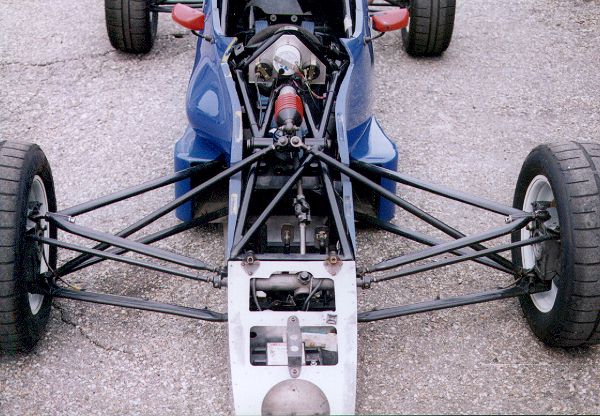
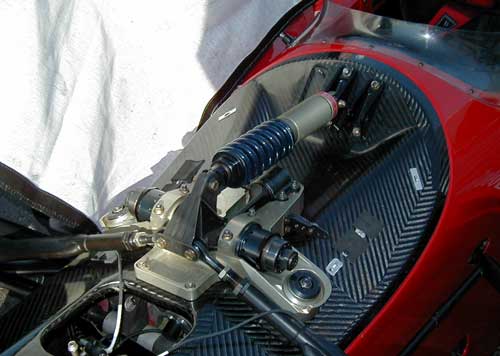

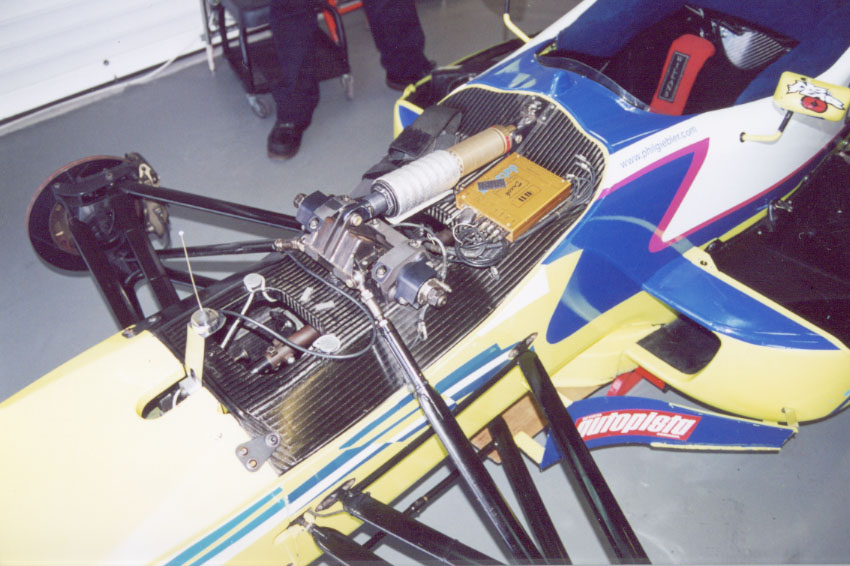
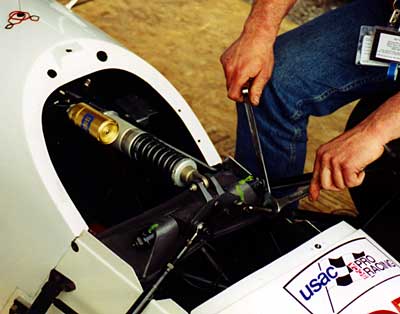
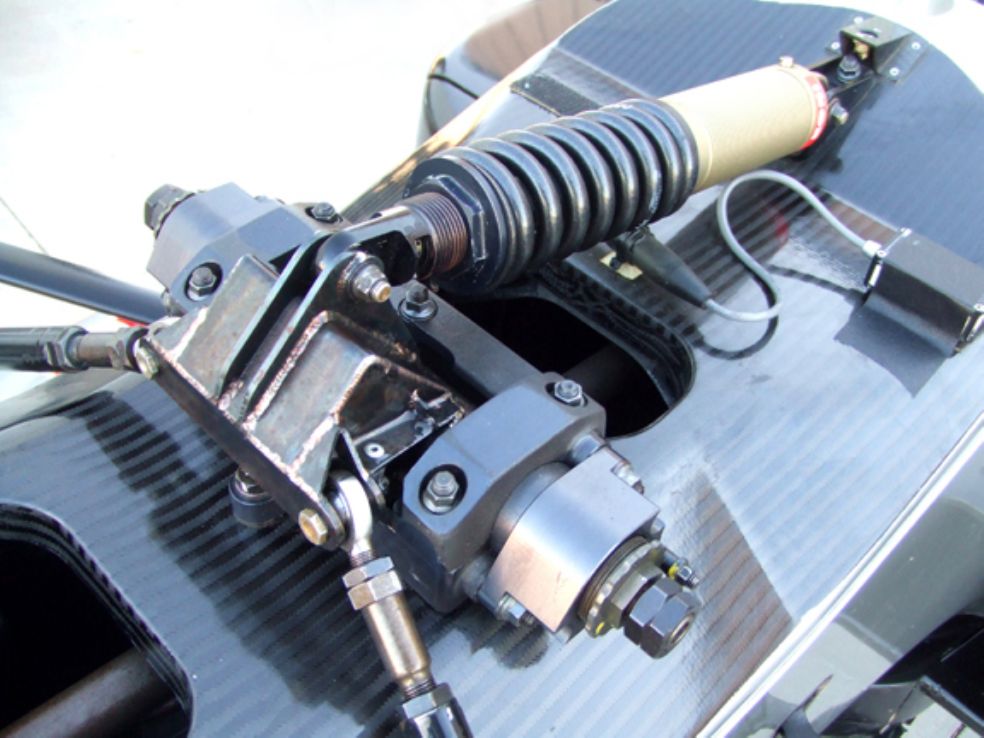
The photo above shows an alternate Dallara front suspension that uses only one coilover unit. When both the wheels move together in bump or rebound, the pushrods activate the rotating link that moves the spring/damper unit. Roll movement occurs when the pushrods move in different directions. When this happens that link has to slide on its shaft and those dark cylinders on that shaft house springs, probably belleville washers, that add roll stiffness. Under the coilover you can see a cockpit-adjustable blade that adds to the roll stiffness.
Backlinks: Bikes
If you would like to get in touch, I can be reached at
